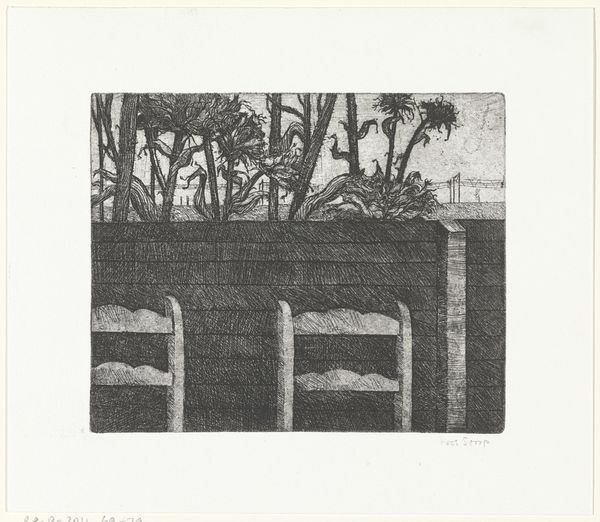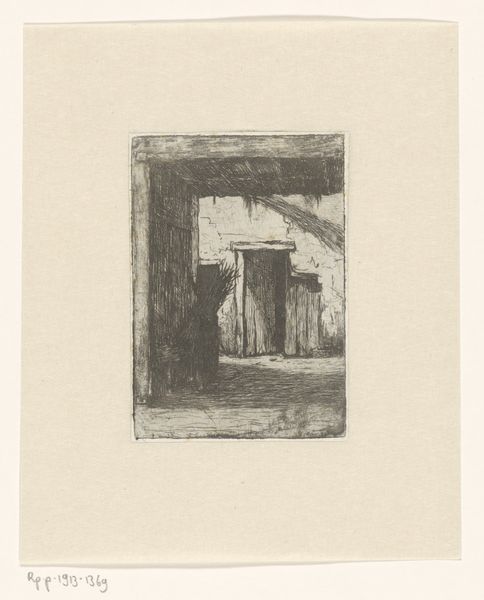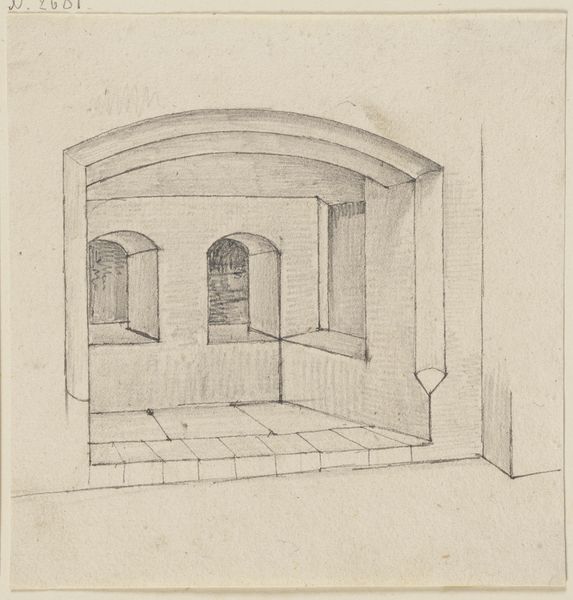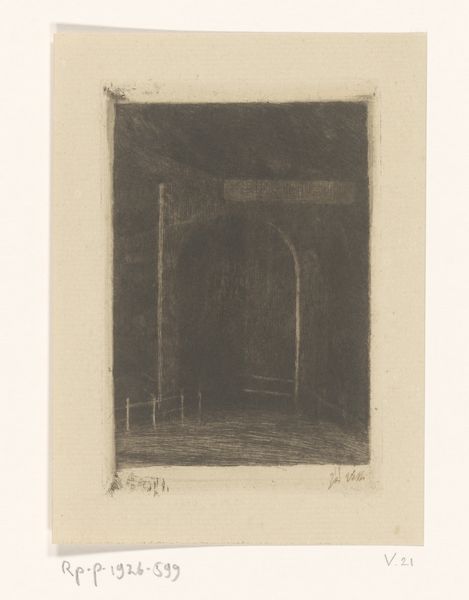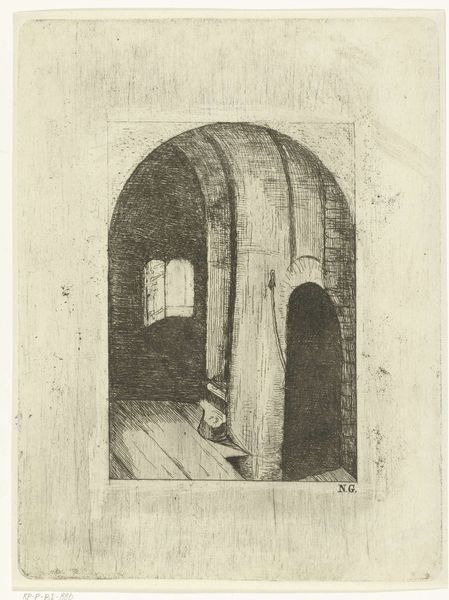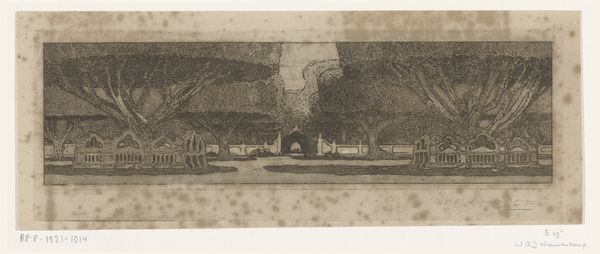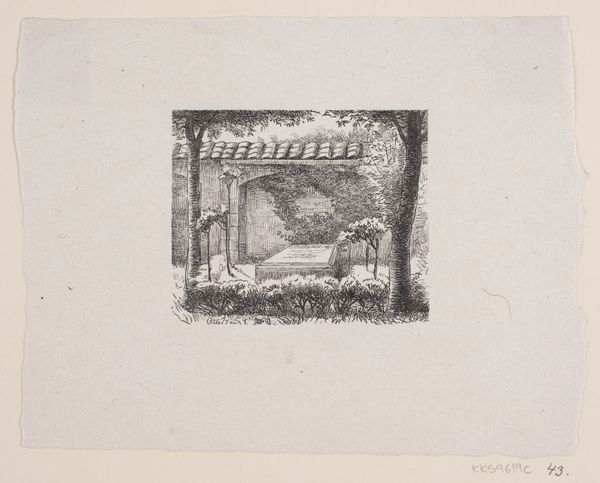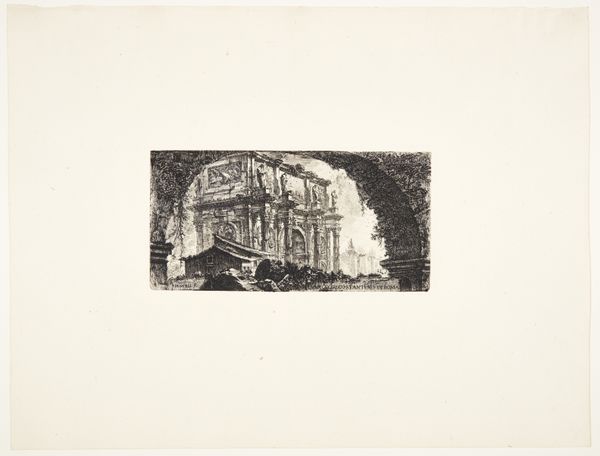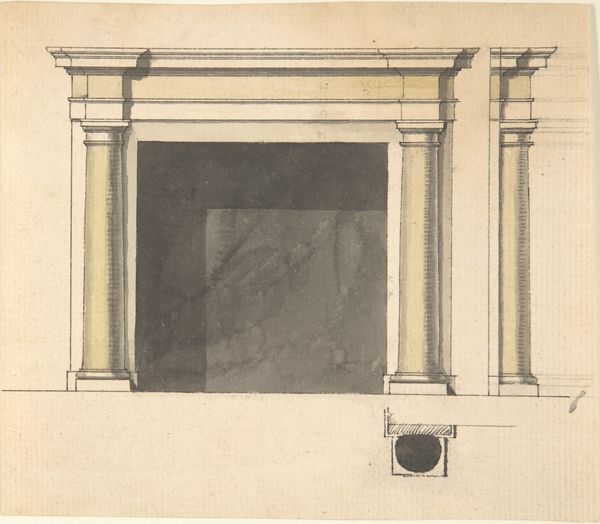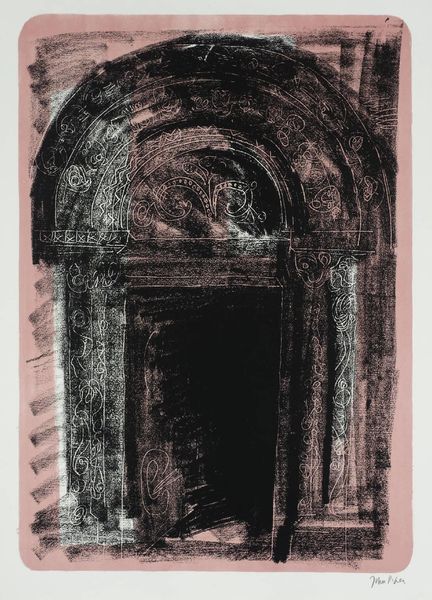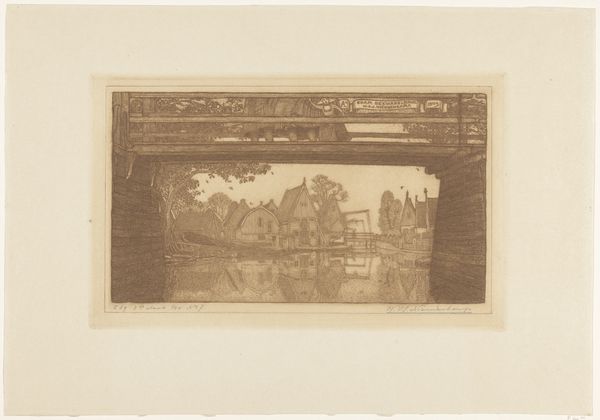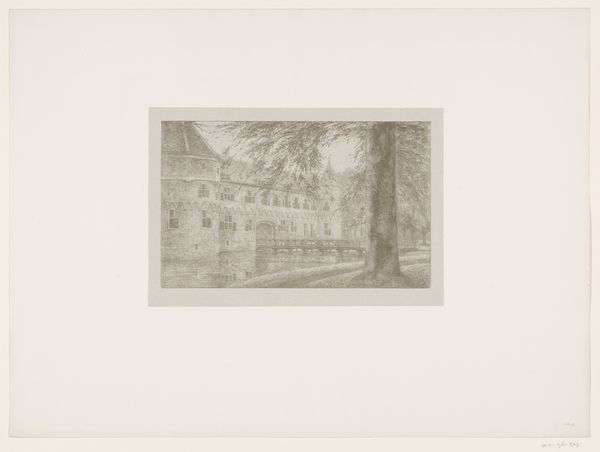
drawing, print, etching, engraving, architecture
#
drawing
#
baroque
# print
#
etching
#
landscape
#
perspective
#
pencil drawing
#
cityscape
#
engraving
#
architecture
Dimensions: height 290 mm, width 200 mm, height 381 mm, width 254 mm
Copyright: Rijks Museum: Open Domain
Editor: This etching by Martin Schedel from 1745, "Scène uit La Gerusalemme Liberata," presents a captivating perspective, showing what looks like a waterway receding into darkness through stone arches. What catches your eye most about this image? Curator: What fascinates me here is the implied labor in both the depicted architecture and the printmaking process itself. The precisely rendered stonework suggests an immense investment of time and physical effort. And the meticulous etching, requiring skilled hand-eye coordination and chemical manipulation, mirrors that material transformation. Think about the social context, who built this and for whom? Editor: So, you're focusing on the process behind both the making of the artwork, and also of the depicted infrastructure? It's interesting, I hadn't considered how much labor would go into the print itself, with such detail on the stonework, water, and reflections. Curator: Precisely. It's not just about aesthetics. Consider the engraver as artisan, meticulously translating form. Where does "art" begin and craft end? Schedel is not simply representing architecture but revealing the underlying materiality and the social relations embedded within its production, and in its reproduction through printmaking. Editor: That perspective gives the image a new layer of depth. I now see the print not just as a landscape, but as a product of combined efforts. Curator: Indeed. Examining the means of production lets us consider art beyond mere representation, grounding it in the concrete realities of its time. The value lies not just in the image but the process. Editor: I will definitely look at art through that lens going forward. Curator: That's excellent. Recognizing how labor shapes our material world, and artworks is an important take away.
Comments
No comments
Be the first to comment and join the conversation on the ultimate creative platform.
